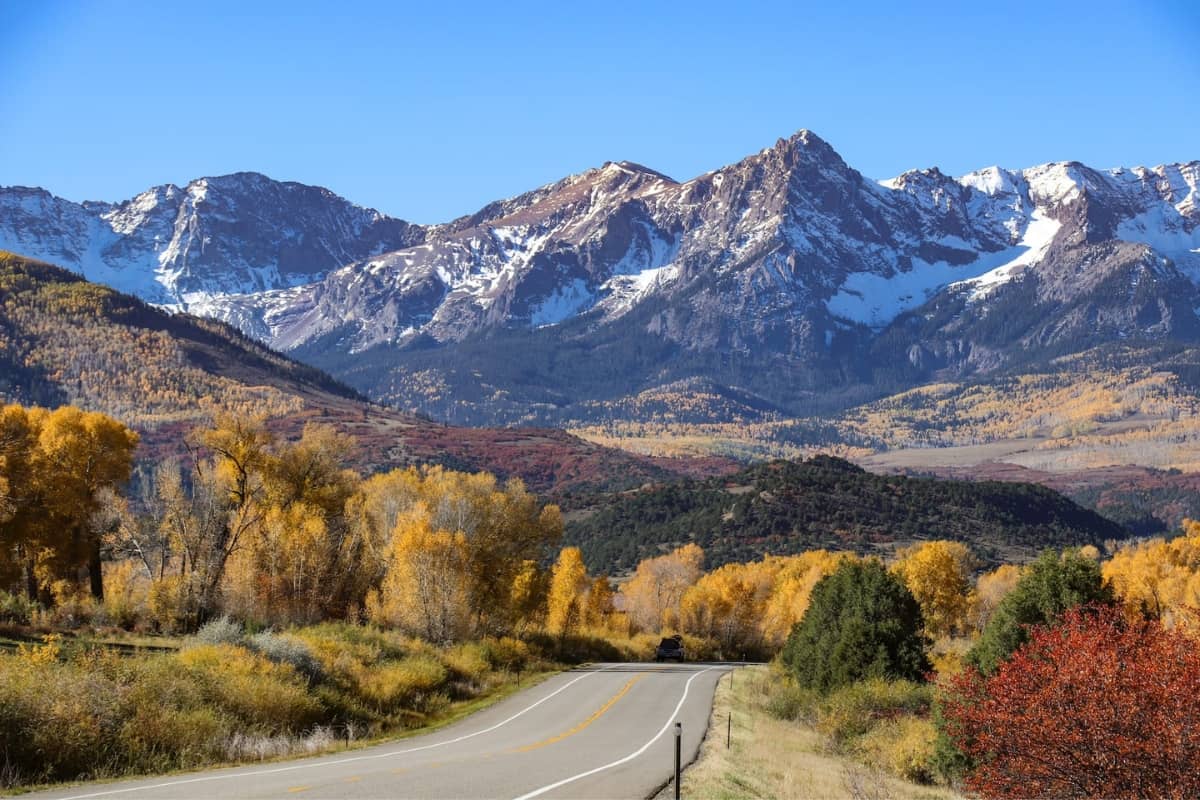The Dallas Divide near Ridgway, Colorado, is renowned for its stunning landscapes and majestic mountain views. Nestled between the San Juan Mountains and the Uncompahgre Plateau, this scenic pass has captured the hearts of many travelers. However, despite its popularity, several myths have developed over the years that cloud the true nature of this beautiful location. In this article, we’ll debunk seven of the most pervasive myths about the Dallas Divide, providing clarity for future visitors.
1. The Dallas Divide is a Dangerous and Difficult Drive
One of the most common misconceptions is that driving through the Dallas Divide is hazardous and requires a high level of driving skill. While the elevation of the Dallas Divide reaches nearly 9,000 feet, the road itself is far from treacherous. State Highway 62, which runs through the Divide, is a well-maintained, paved road with a gentle grade of around 4%. Unlike other Colorado mountain passes known for their steep, winding roads, the Dallas Divide offers a relatively easy drive that’s accessible to most vehicles. The myth likely stems from the winter months when snow and ice can make driving conditions more challenging. However, with proper precautions, the road remains navigable year-round.
2. The Area Around Dallas Divide is Just a Scenic Drive
Another misconception is that there’s nothing to do around the Dallas Divide beyond enjoying the scenic drive. This couldn’t be further from the truth. The Dallas Divide is surrounded by opportunities for outdoor activities, making it a prime destination for adventurers. Hiking, mountain biking, off-roading, and photography are just a few of the activities that visitors can enjoy. The nearby towns of Ridgway, Telluride, and Ouray offer additional attractions such as hot springs, historic sites, and vibrant local culture. Whether you’re seeking a leisurely drive or an action-packed day of exploration, the Dallas Divide has something for everyone.
3. The Dallas Divide is Just Another Mountain Pass
To some, the Dallas Divide might appear as just another mountain pass in Colorado, but this view overlooks the unique beauty and significance of the area. The Divide serves as a natural gateway between the rugged San Juan Mountains and the rolling Uncompahgre Plateau. The contrast in landscapes creates a striking panorama, especially when viewed in the fall when the aspen trees turn golden. The area is also home to prominent peaks such as Mount Sneffels and Dallas Peak, making it a favorite spot for photographers. The Dallas Divide’s scenic diversity and geological importance make it far more than just another pass.
4. The Dallas Divide is Only Worth Visiting in the Fall
While the Dallas Divide is undeniably spectacular in the fall, this myth diminishes the year-round appeal of the area. Each season at the Dallas Divide offers something unique. In spring, the landscape bursts with wildflowers, while summer brings lush greenery and clear skies. Winter, on the other hand, transforms the area into a serene snowscape, perfect for those who appreciate the quiet beauty of a winter wonderland. Visitors who limit themselves to a fall visit miss out on the full range of experiences that the Dallas Divide has to offer
5. The Best Views are Inaccessible Without a 4×4 Vehicle
There’s a belief that to truly experience the best views of the Dallas Divide, you need a rugged 4×4 vehicle to navigate challenging off-road routes. While some less-traveled paths, like the Last Dollar Road, do require a more capable vehicle, this myth overlooks the fact that the most iconic views are easily accessible from paved roads. The viewpoints along State Highway 62 provide breathtaking vistas of the San Juan Mountains without requiring any special vehicle or strenuous effort. This accessibility makes the Dallas Divide a destination that can be enjoyed by all, regardless of their vehicle.
6. The Dallas Divide Lacks Historical Significance
Another common misconception is that the Dallas Divide is purely a natural attraction with no historical importance. In reality, the Dallas Divide is rich with history. Named after George M. Dallas, the 11th Vice President of the United States, the area played a significant role during the Colorado Gold Rush. The Last Dollar Road, which parallels the modern highway, was once a crucial toll road for miners traveling to the booming towns of Telluride and Ouray. The historical context of the Dallas Divide adds depth to its natural beauty, making it a place where history and nature intertwine.
7. The Dallas Divide is Overcrowded and Not Worth Visiting
Finally, there’s a myth that the Dallas Divide is so crowded, particularly during peak seasons, that it’s not worth the trip. While it’s true that the Divide can see a surge in visitors, especially during the fall, the area is expansive enough that visitors can still find solitude. There are numerous viewpoints and trails where one can enjoy the scenery without the crowds. Moreover, for those who are willing to explore beyond the most popular stops, the Dallas Divide offers peaceful and secluded spots that showcase its beauty without the hustle and bustle of tourists.
Conclusion
The Dallas Divide is a remarkable destination that deserves to be understood and appreciated without the distortion of myths. From its accessible and scenic drives to its rich history and year-round appeal, the Divide offers a diverse array of experiences that cater to all types of travelers. Whether you’re seeking solitude in nature, a historical journey, or simply a stunning view, the Dallas Divide delivers on all fronts. By debunking these common myths, we hope to encourage more people to explore and enjoy this beautiful part of Colorado.






